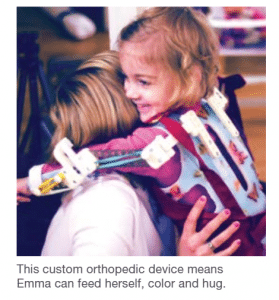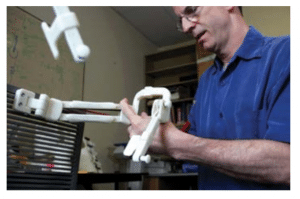Medical Device Applications Overview: Don't Forget FDM!
Anyone who has been paying attention to the news, and especially our industry, has probably seen 3D printed face shields in the last few weeks. We at CATI have committed to assisting our partner Stratasys in building these masks. So far we have made over 600 for various hospitals and police/fire departments. Here’s a news story as well as what the face shields look like if you want to get caught up.
This got me thinking, we often talk about Stratasys’ Digital Anatomy Printer(DAP). It has incredible advancements of photopolymer resins from Polyjet to 3D print bone and tissue simulants(even in the same part!). While DAP deservedly takes plenty of the spotlight in medical device and surgical applications, where does FDM printing fit in the grand scheme of things?
Right away, this face shield is a fantastic use of FDM technology. The parts are easy to print, use little support material meaning minimal post-processing, and have no classification to require arduous sterilization. But it’s not just with face masks, FDM has demonstrated time and time again to be a viable option for medical device applications.
One of the earliest cases Stratasys saw that made waves in the media was the historic “Emma’s Magic Arms” story. Emma was a young girl diagnosed at a very early age with arthrogryposis (arthro-gi-posis) which left her with extremely little mobility in her upper body. After several surgeries, her family threw up their hands until Whitney Sample from Wilmington, Delaware stepped up and created “WREX” (Wilmington Robotoic Exoskeleton), a 3D-printed exoskeleton prosthetic for Emma to wear. There are a few problems with traditional manufacturing processes that made this project nearly impossible, the first of which is that Mr. Sample could not use their CNC machine to fabricate these pieces because some of them were too small or too complex for that machine. In addition, as Emma got older, she would need multiple device iterations completed with quick turnaround. Using 3D printing on FDM, Whitney was able to quickly fit these pieces to rapidly adapt as she grew.


In another example, we saw researchers at KAIST (Korea Advanced Institute of Science and Technology) using FDM technology to create wearable auxiliary devices that essentially works as an EKG device. The critical business here is very similar to Emma’s Magic Arms in that it’s incredibly difficult to quickly turnaround a device that needs to be worn by several different people without going through many iterations. This can be complicated in traditional manufacturing as sometimes things simply may not move fast enough to match the urgency of the industry. Using FDM, KAIST was able to cut their prototype production from several weeks to literally overnight. This greatly accelerated their project schedule and time table, which meant the engineers and designers working on this particular device could be productive working on other tools and projects, which in turn caused an increase in their overall production rates in that year. The 3D printing advantage here is a multi-faceted concept; saving time and money in one area translates to high levels of success across the entire organization.

In the vast and cutting-edge world of medical applications and devices, it is as important that we at Computer Aided Technology are just as nimble and reactive to the ever-changing needs. These are just two of several case studies involving the successful use of FDM in the medical field.
Next time, I’ll continue this series and show you all a couple more FDM-specific case studies. If you have questions, don’t hesitate to reach out to us at info@cati.com.
Robb Lauer
Application Engineer
Computer Aided Technology, Inc.

 Blog
Blog